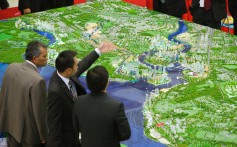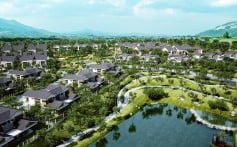
Iskandar follows the Shenzhen script
Links to Hong Kong are replicated in the Malaysian economic zone's ties to Singapore

Efforts to transform the Malaysian border zone near Singapore into a bustling commercial corridor appear to be on track after a rocky start.
The zone, known as Iskandar, is emerging as an attractive opportunity that deserves to be on the radar of those considering investment in the new growth centres of Asia.

One reason that Iskandar makes investment sense is that it complements Singapore's new economic strategy. The city state's sharp rise in housing prices and schooling costs is creating a natural pool of demand for low-cost living within commuting distance. This pool also includes the growing ranks of Singaporean pensioners struggling to survive in a low-yield and high-inflation environment. Iskandar's new industrial parks offer the lure of cheap labour, good logistics and infrastructure. For Malaysia, it offers the possibility of regenerating the neighbouring border city of Johor Bahru, improving cross-border connectivity and bringing in cross-border investment in a golden era of Malaysian-Singaporean relations.
Malaysian planners borrowed heavily from China's experience in fostering rapid industrialisation of the Pearl River Delta economic zone. Authorities in Kuala Lumpur identified the Johor border zone in 2006 as one of Malaysia's five special economic corridors, reminiscent of the way Shenzhen was singled out as one of China's five special economic zones in 1979.
However, it has only been since 2011, when Singapore's sovereign fund Temasek announced a 30 billion Malaysian ringgit (HK$6.33 billion) joint investment with its Malaysian counterpart Khazanah that overseas investors started taking Iskandar seriously.


Currently, there is one coastal highway connecting Singapore to Nusajaya across the Johor strait at two gateways: the Causeway and the Second Link. A new ferry link between Singapore and Puteri Harbour, Nusajaya, began service in May. Future plans include an MRT link to Singapore's MRT system and a high-speed rail service from Kuala Lumpur to Johor Bahru which will connect to central Singapore.
Iskandar's success in attracting big-brand investors, especially from Britain, has been surprising and possibly reflects strong government involvement. The Legoland theme park, which opened in September last year, attracted 1 million visitors in just four months. It has since had to introduce admission caps to cope with the flood of daily visitors. The Hello Kitty Town park opened one month later has also enjoyed strong visitor growth.
More surprising has been the success of Educity, a campus of schools and colleges which has filled up so fast that authorities have decided to develop an adjacent Education Park. Southampton University and Newcastle University have both opened faculties and currently have several hundred students enrolled
Britain's Marlborough College has also established an integrated primary and secondary boarding school in Educity. About 370 students, many commuting daily from Singapore, are currently enrolled. Other high-profile brands soon to open include Singapore's highly-regarded Gleneagles Hospital, which will open a 300-bed medical centre by next year.
The "build it and they will come" model of investment has yielded impressive results both in Singapore and in markets such as Macau. The synergies between Iskandar and Singapore, including joint government financial commitment to ensure its success, add up to a good long-term investment for those looking to relive the heyday and investment returns of Hong Kong's economic integration with Shenzhen.
Carl Berrisford is an analyst for UBS CIO Wealth Management